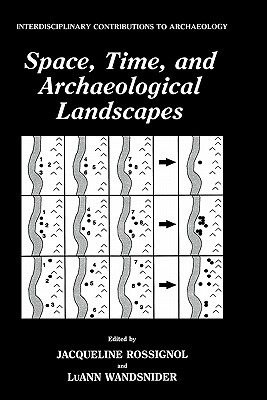
- We will send in 10–14 business days.
- Publisher: Springer
- ISBN-10: 0306441616
- ISBN-13: 9780306441615
- Format: 15.6 x 23.4 x 1.9 cm, hardcover
- Language: English
- SAVE -10% with code: EXTRA
Space, Time, and Archaeological Landscapes (e-book) (used book) | bookbook.eu
Reviews
Description
The last 20 years have witnessed a proliferation of new approaches in archaeolog- ical data recovery, analysis, and theory building that incorporate both new forms of information and new methods for investigating them. The growing importance of survey has meant an expansion of the spatial realm of traditional archaeological data recovery and analysis from its traditional focus on specific locations on the landscape-archaeological sites-to the incorporation of data both on-site and off-site from across extensive regions. Evolving survey methods have led to experiments with nonsite and distributional data recovery as well as the critical evaluation of the definition and role of archaeological sites in data recovery and analysis. In both survey and excavation, the geomorphological analysis of land- scapes has become increasingly important in the analysis of archaeological ma- terials. Ethnoarchaeology-the use of ethnography to sharpen archaeological understanding of cultural and natural formation processes-has concentrated study on the formation processes underlying the content and structure of archae- ological deposits. These actualistic studies consider patterns of deposition at the site level and the material results of human organization at the regional scale. Ethnoarchaeological approaches have also affected research in theoretical ways by expanding investigation into the nature and organization of systems of land use per se, thus providing direction for further study of the material results of those systems.
EXTRA 10 % discount with code: EXTRA
The promotion ends in 16d.04:27:56
The discount code is valid when purchasing from 10 €. Discounts do not stack.
- Publisher: Springer
- ISBN-10: 0306441616
- ISBN-13: 9780306441615
- Format: 15.6 x 23.4 x 1.9 cm, hardcover
- Language: English English
The last 20 years have witnessed a proliferation of new approaches in archaeolog- ical data recovery, analysis, and theory building that incorporate both new forms of information and new methods for investigating them. The growing importance of survey has meant an expansion of the spatial realm of traditional archaeological data recovery and analysis from its traditional focus on specific locations on the landscape-archaeological sites-to the incorporation of data both on-site and off-site from across extensive regions. Evolving survey methods have led to experiments with nonsite and distributional data recovery as well as the critical evaluation of the definition and role of archaeological sites in data recovery and analysis. In both survey and excavation, the geomorphological analysis of land- scapes has become increasingly important in the analysis of archaeological ma- terials. Ethnoarchaeology-the use of ethnography to sharpen archaeological understanding of cultural and natural formation processes-has concentrated study on the formation processes underlying the content and structure of archae- ological deposits. These actualistic studies consider patterns of deposition at the site level and the material results of human organization at the regional scale. Ethnoarchaeological approaches have also affected research in theoretical ways by expanding investigation into the nature and organization of systems of land use per se, thus providing direction for further study of the material results of those systems.


Reviews